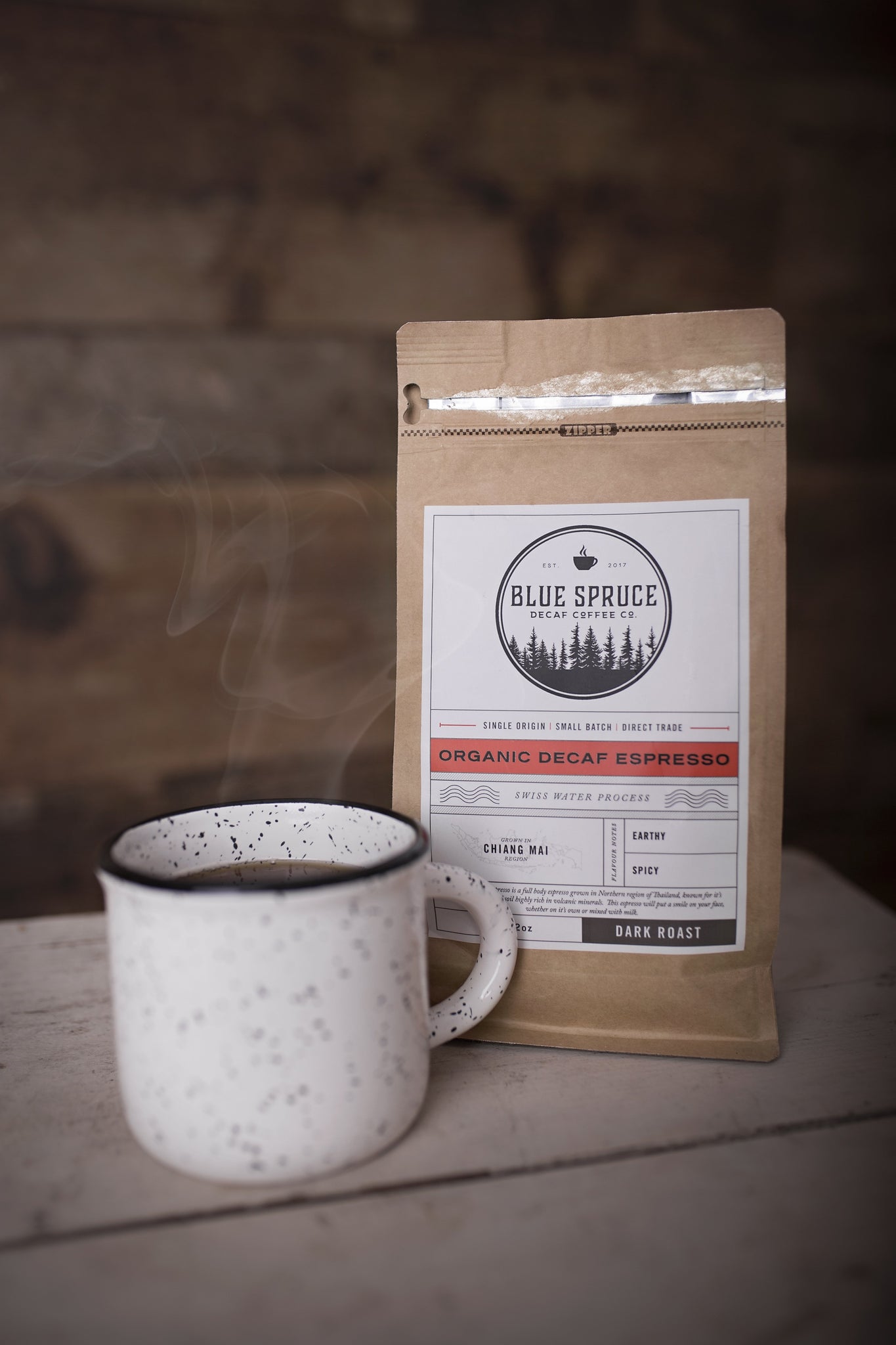The art of coffee roasting is a delicate process which involves heat and time. Roasting the beans sculpts the flavor into something truly extraordinary. When it comes to caffeine free coffee, the roast level is a critical factor that can dramatically influence the taste of your morning brew.
Let’s explore the intriguing world of decaf coffee and find out how the varying roast levels - light, medium, and dark - work their magic on the beans to create distinct flavor profiles. Whether you're a fan of bright and nuanced notes or crave the bold richness of a dark roast, understanding these roast levels will guide you to the perfect cup of decaf coffee.

Which roast levels are available in decaf coffee beans?
Mainly there are three roast levels available based on the duration and temperature of roasting.
Light Roast: Shorter duration and lower temperatures make light roast beans. This results in a light brown color and a more pronounced acidity. Light roasts often preserve the bean's natural flavors, making them an excellent choice for those who want to taste the unique characteristics of the coffee's origin.
Medium Roast: Medium roasts fall in between light and dark roasts in terms of color and flavor. The beans are roasted until they reach a medium brown hue, and this roast level typically offers a balanced profile with moderate acidity and body. I
Dark Roast: Dark roasted beans are roasted for a longer period and at higher temperatures. This results in a deep, dark brown or even black bean with a shiny surface. Dark roasts tend to have a bold, smoky flavor with diminished acidity and a fuller body.
Impact of Roast Levels on Organic Decaf Coffee Flavor
Decaf coffee beans are processed to remove most of their caffeine content before roasting. This process can affect how they react to roasting compared to regular coffee beans.
Light Roast Decaf: Light roast decaf coffee retains more of its natural flavors and acidity, making it an excellent choice for those who want a milder, more nuanced taste in their decaffeinated brew. You can expect bright, fruity, and floral notes in a light roast decaf.

Medium Roast Decaf: Medium roast decaf coffee offers a well-balanced flavor profile. It is a balance between the bean's original characteristics and the roasting process. The result involves moderate acidity and body. Medium roast blends usually have some caramel and nutty notes.
Dark Roast Decaf: It has a stronger and bolder flavor. Dark roast decaf beans have a rich, smoky taste with diminished acidity and a more pronounced body. This roast level can mask some of the inherent flavors of the coffee bean but provides a robust, earthy experience
Is There Caffeine in Decaf Coffee?
Decaf is caffeine free coffee. Decaffeination is the process of washing caffeine from regular coffee beans. To be labelled as decaffeinated coffee, the beans must have had at least 97% of their caffeine removed. Swiss Water process removes up to 99% caffeine content from coffee beans. It means a regular cup of coffee which has around 140 milligrams of caffeine can be reduced to 2 milligrams with decaf. Lower caffeine content makes decaf a suitable choice for those looking to reduce their caffeine intake.
Conclusion
In the world of decaf coffee, roast levels can impact the flavor profile of your brew. It is the decaffeination process responsible for caffeine content and not the roast levels. So, if you want a caffeine free beverage, you can experiment with different roast levels but make sure to consume the chemical free Swiss water processed decaf. Shop your bags of delightful Mexican and Thai decaf blends from Blue Spruce Decaf Coffee Co. Their decaf is organic, non-GMO certified and available in dark and medium roast blends.




Comments